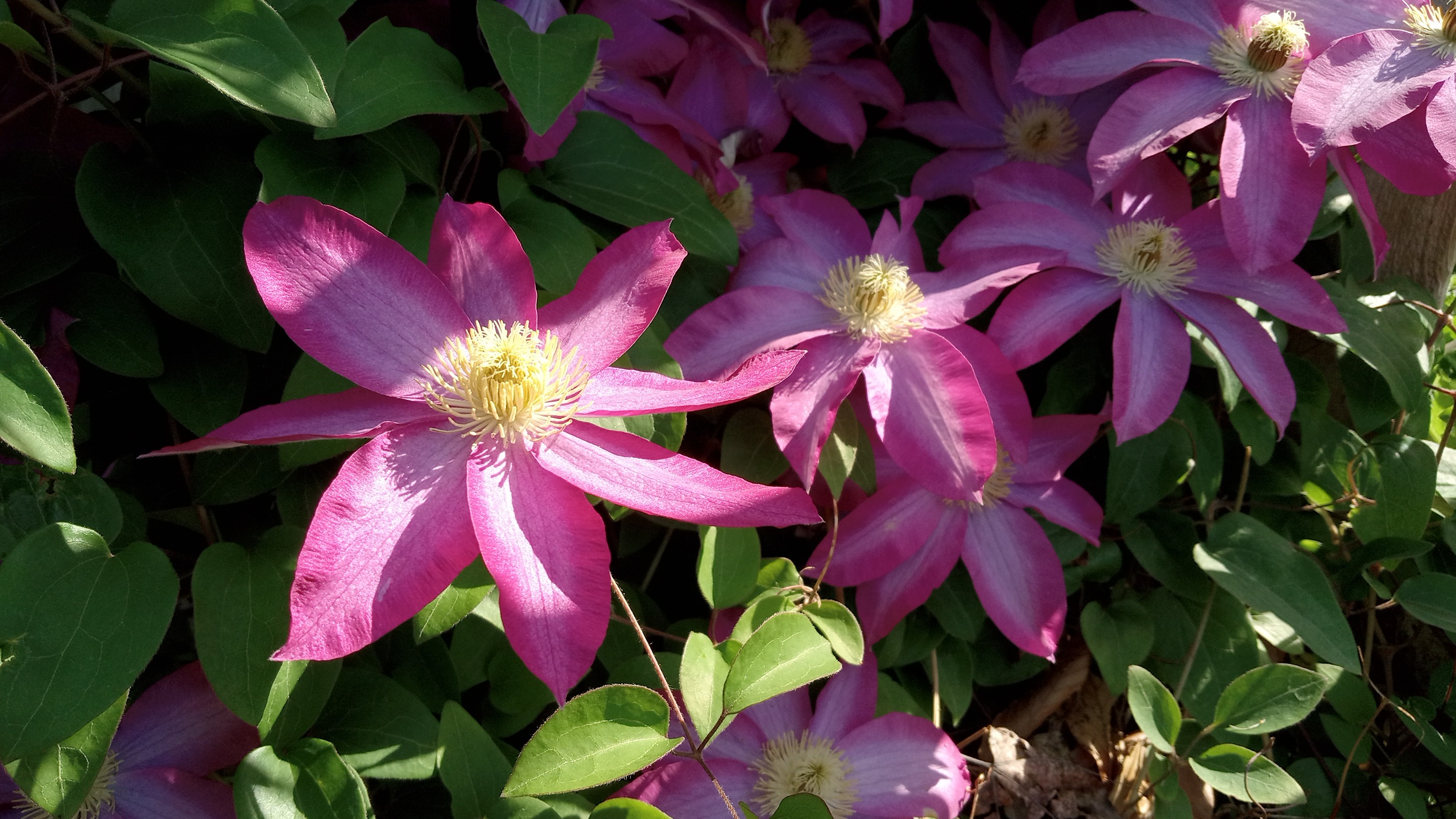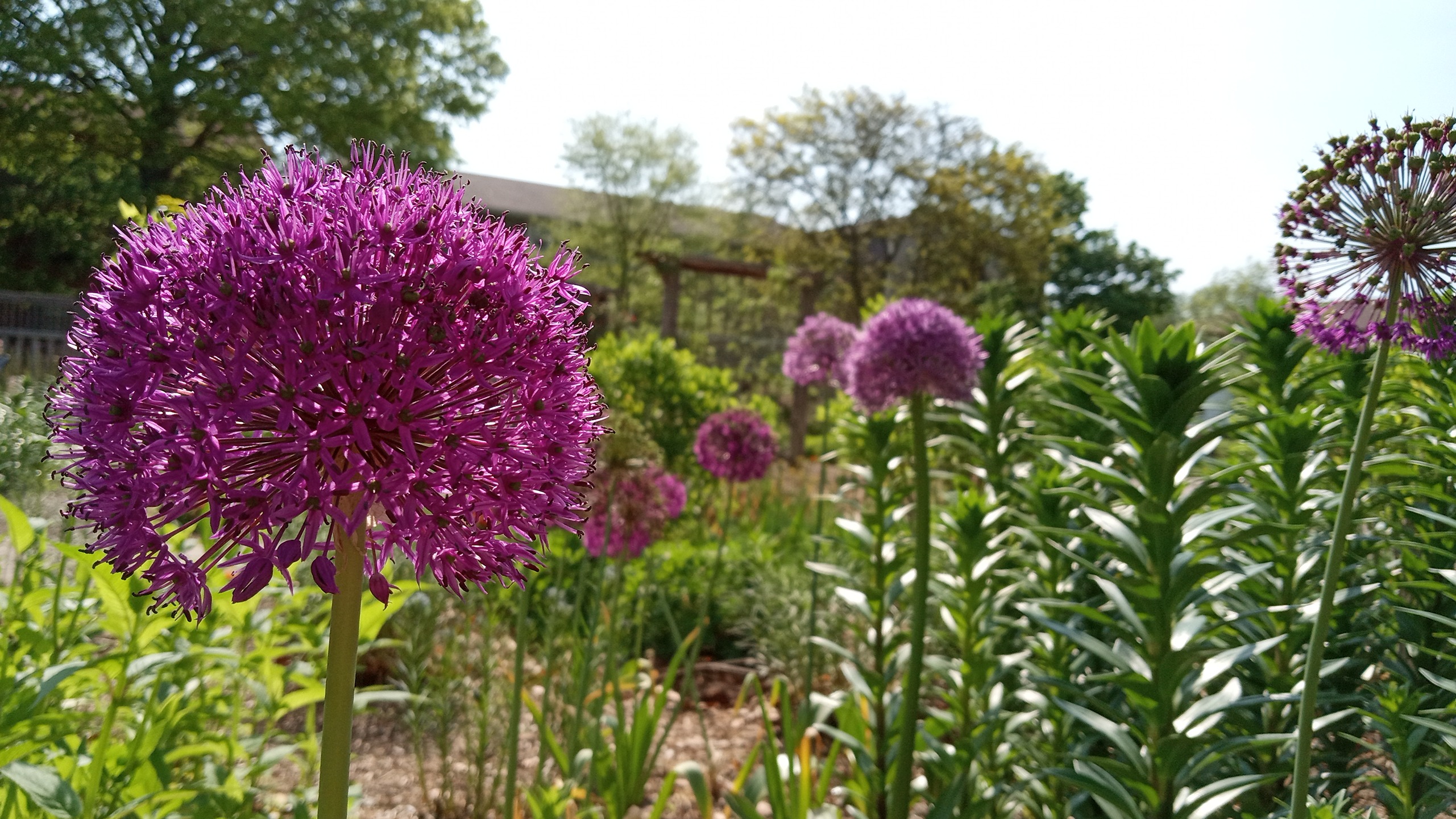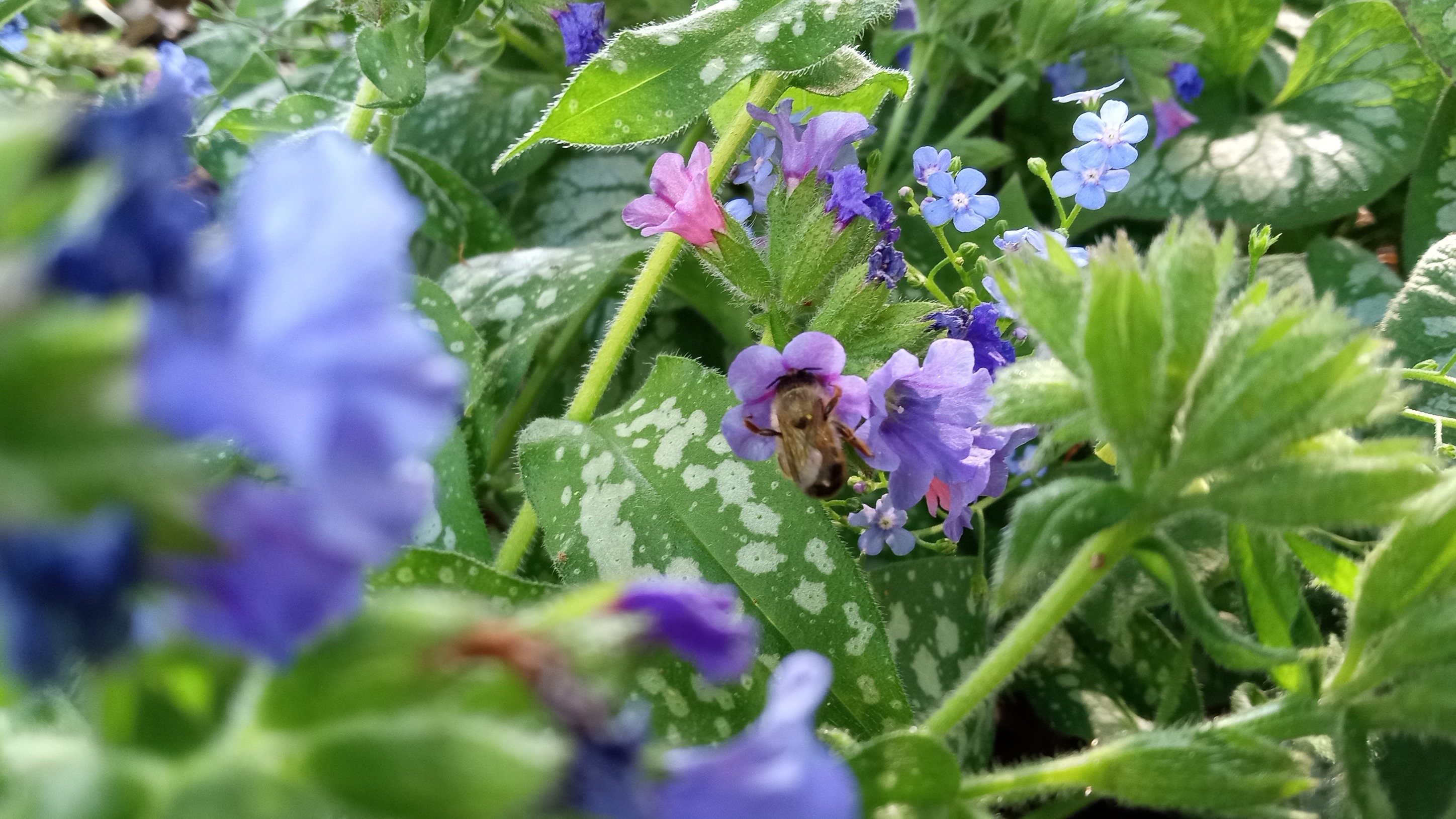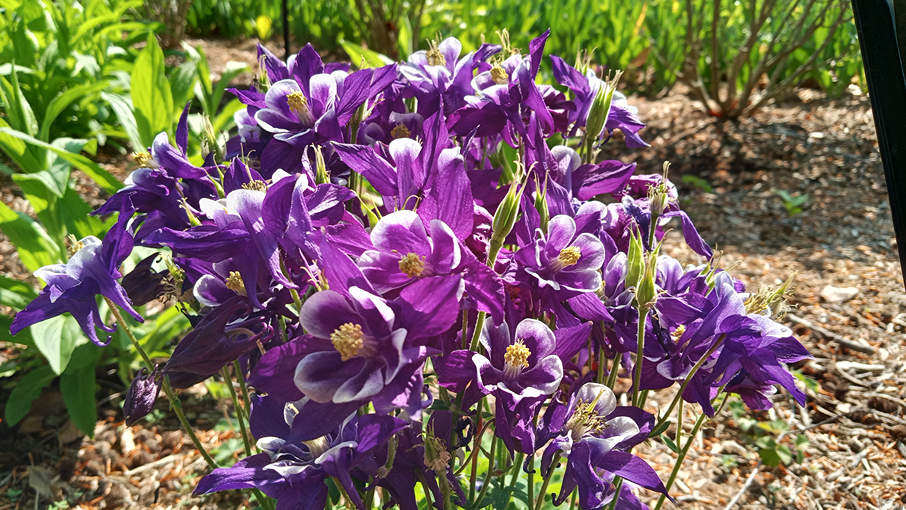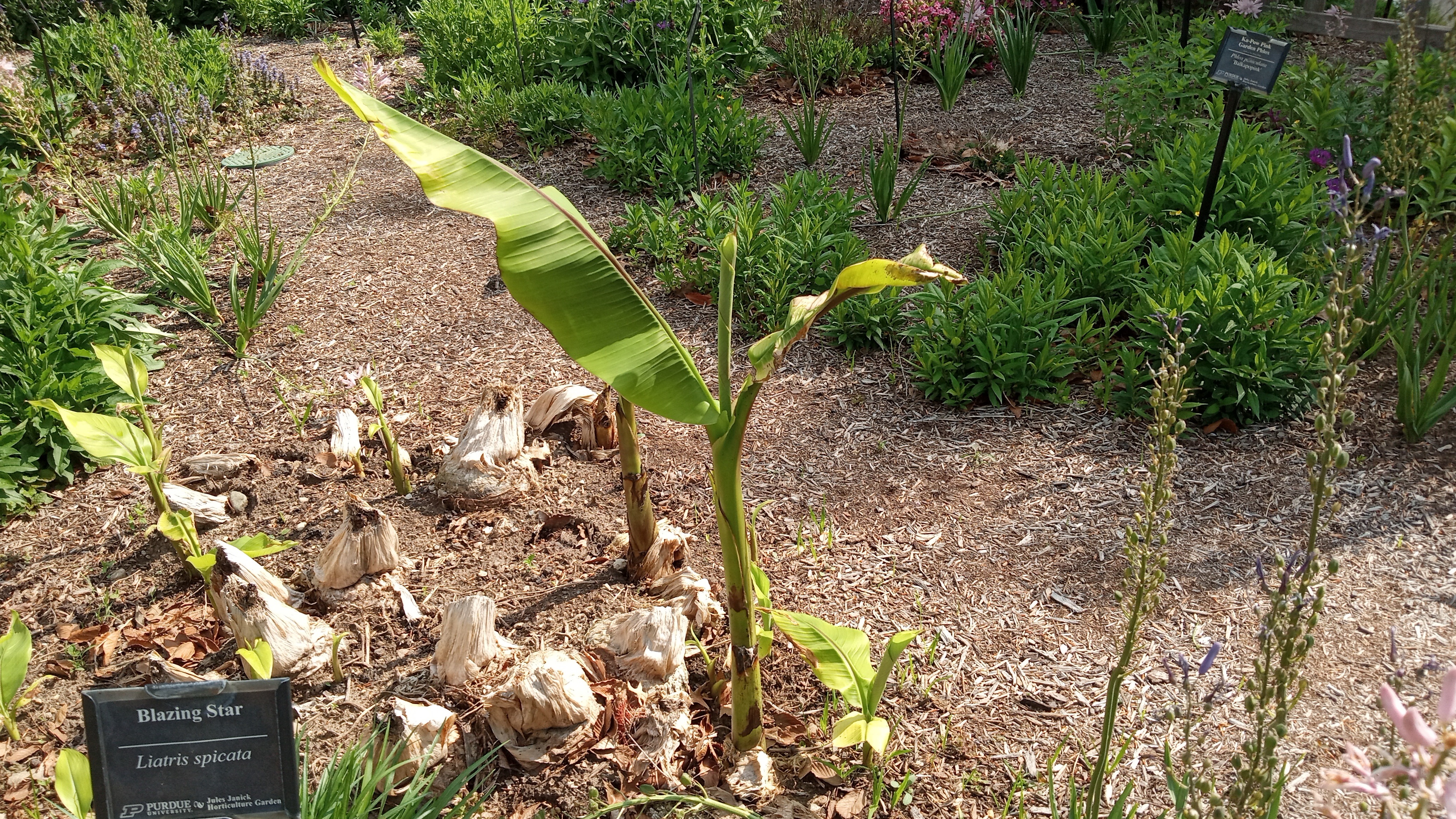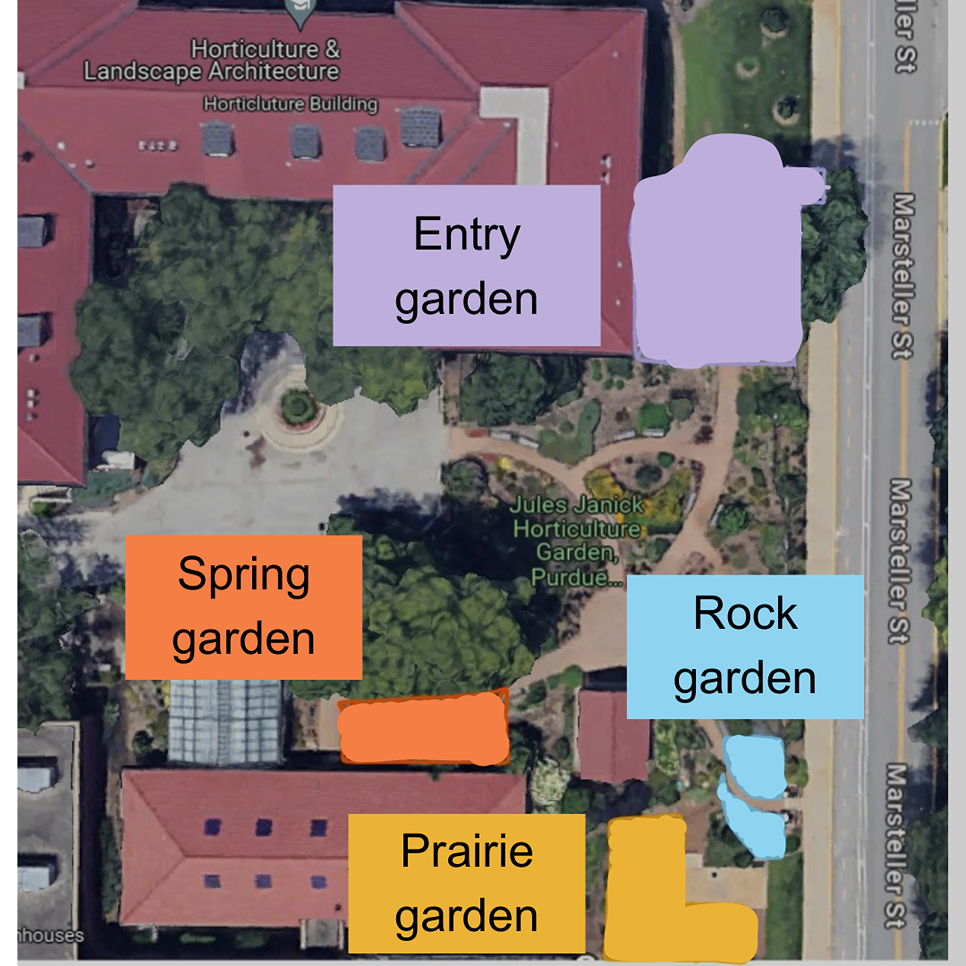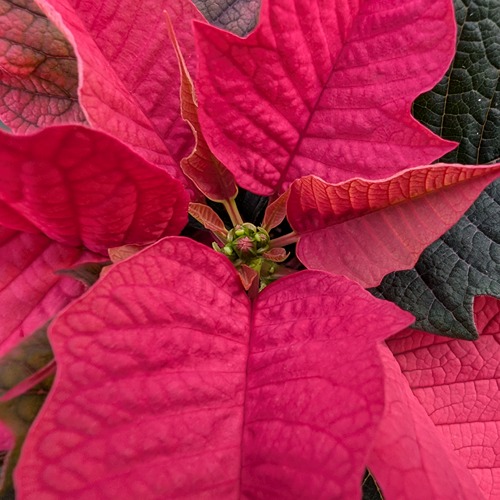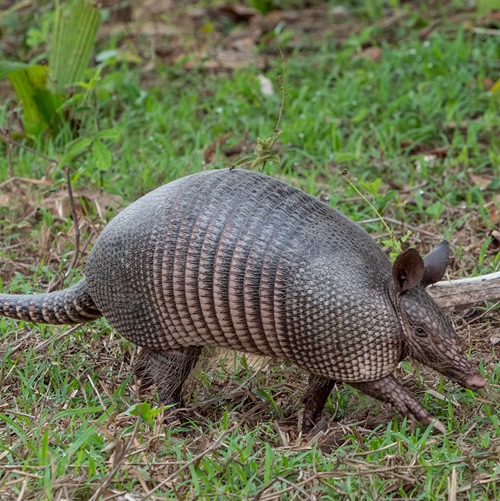April showers bring May flowers to Jules Janick Horticulture Garden
The sweet smell of hundreds of blossoms draws pollinators and people alike to the Jules Janick Horticulture Garden. With flower colors ranging from bright pinks, oranges and yellows to muted purples and whites, the garden is a carefully curated display that is a resource for the Purdue and Greater Lafayette community.
The garden, which is adjacent to the Purdue Horticulture and Landscape Architecture building, features over 1,000 types of plants, many showing their colors at different times. Visitors can enjoy the general garden area as well as specialized areas, such as the entry garden, spring garden, rock garden and prairie garden.
Many of the garden’s plants are familiar to Indiana gardeners. Earlier in the spring, daffodils and tulips brought color to the garden. Now, poppies, clematis, azaleas, allium and pansies are catching the eye. Other plants, like purple-leafed coral bells and light green “All Gold” Japanese forest grass, offer color through their leaves.
Some of the plants might surprise Indiana gardeners. For example, the garden has banana plants that return every year. Most Indiana gardens are too cold for banana plants to survive the harsh Midwest winters. But thanks to a steam line that runs through the garden, the soil stays warm enough to turn the banana plant into a perennial, or plant that returns every year, instead of an annual, or plant that dies at the end of the growing season. The steam line is also responsible for the early emergence and blooming of the tulips and some other plants in the garden.
The garden’s beauty is no accident, as head gardener Karen Sullivan knows well. “There's gardening to do year-round,” Sullivan said.
Sullivan is one of the garden’s caretakers, a group which also includes Michael Dana and several students, managing the garden for the Department of Horticulture and Landscape Architecture. They plant, mulch, weed, water and more to ensure the garden always has color and order.
Students in horticulture and entomology classes also take advantage of the space through using it as a hands-on classroom. For example, the greenhouse production class grows annuals there.
Visitors to the garden can learn about horticulture through the signs next to each plant. The signs list the plants’ common names and scientific names, and some signs even have a QR code to the Purdue Arboretum website, where users can find additional information.
“Take photos of the plants you like here and don't forget to take a photo of the name on the sign,” Sullivan said. “These are all plants—other than the banana plant—that can grow in any Indiana garden.”

